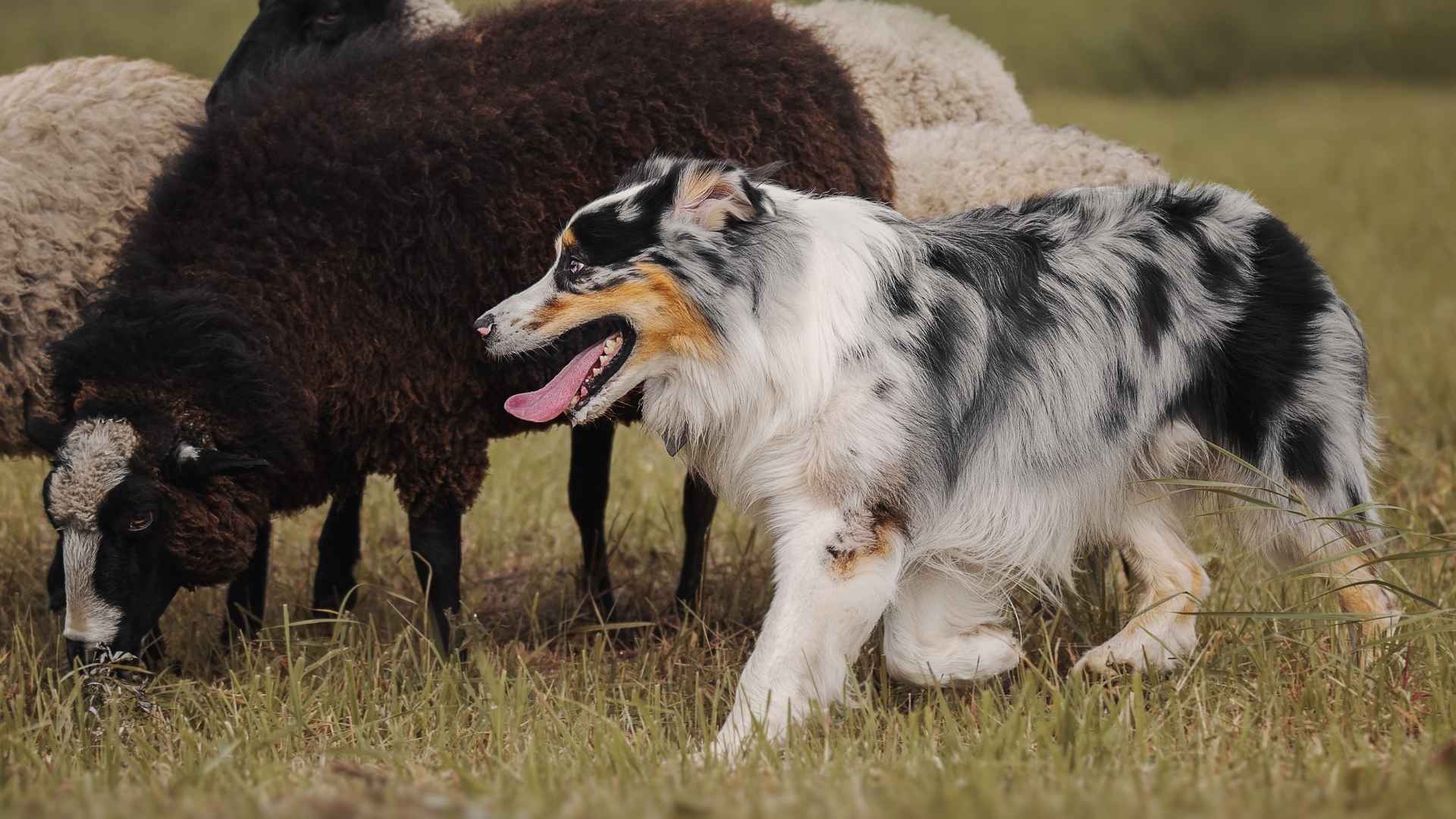Imagine a dog that never hits the pause button, a canine powerhouse with the energy to match your busiest days. Hyperactive working dog breeds aren’t your typical lap dogs—they’re the high-octane, hard-working heroes of the dog world, designed for constant motion and mental stimulation.
Whether they’re herding cattle across vast fields or guarding with razor-sharp focus, these dogs thrive on action. But here’s the thing: they’re not just looking for a jog around the block. These breeds need a job to do, a challenge to conquer, and a purpose to fulfill.
If you’re someone who craves adventure, loves a challenge, and is ready for a dog that can keep up, you might just have found your perfect match. Stick around because we’re about to dive into the world of hyperactive working dogs, where energy knows no limits, and every day is a new opportunity for greatness. Ready to meet your new best friend? Keep reading!
Hyperactive Working Dog Breeds
1. Alaskan Malamute
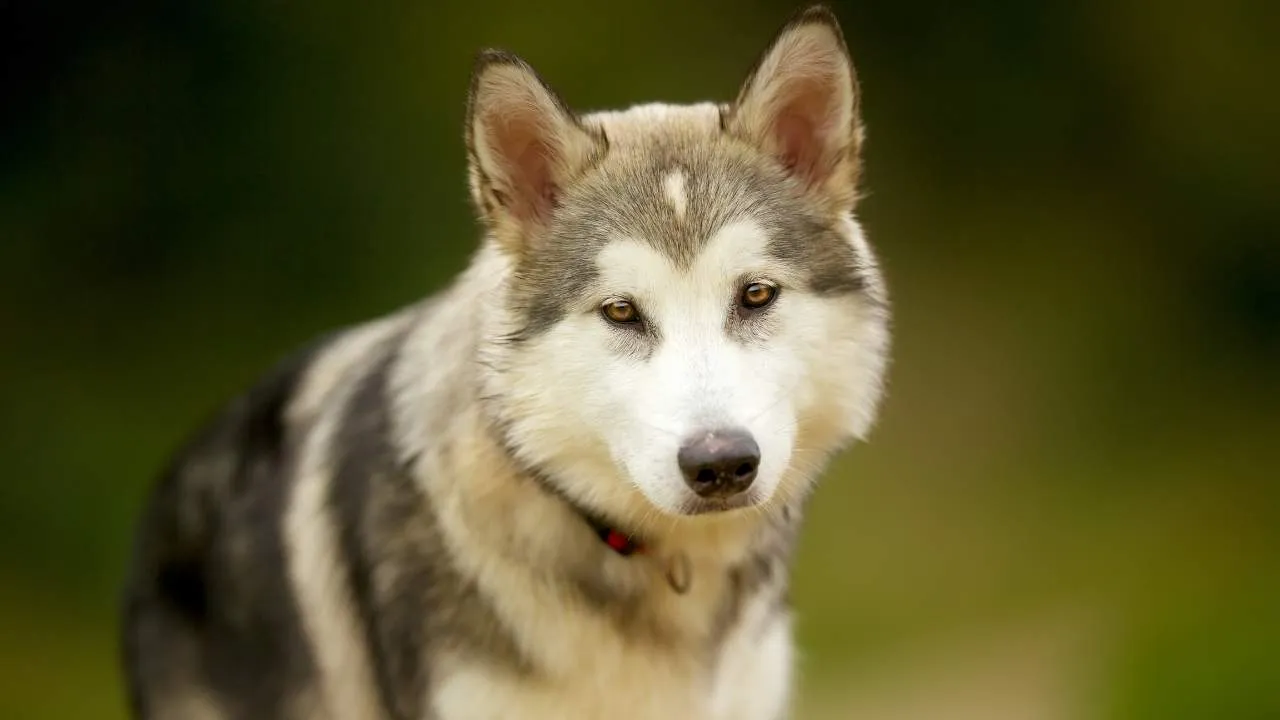
The Alaskan Malamute is one of the most energetic dog breeds, originally bred by the Mahlemiut Inuit tribe in Alaska. Known for their strength, endurance, and thick, weather-resistant coat, these dogs were crucial for hauling heavy loads and aiding in big-game hunting in the Arctic.
They are easily recognized by their broad heads, erect ears, plumed tails, and expressive brown eyes, which reflect both their hardworking nature and affectionate temperament.
Historically, Alaskan Malamutes were integral to survival in harsh climates and played a major role in events like the 1925 Serum Run. They also served during both World Wars, transporting supplies and performing search and rescue missions. The breed’s near extinction due to interbreeding during the Gold Rush was reversed in the 1920s by enthusiasts who helped preserve its purity, leading to the American Kennel Club recognition in 1935.
Today, while they are still admired for their work ethic, Malamutes also make loving family companions. They require consistent leadership and early training due to their pack-oriented nature. Daily exercise is essential, and they thrive in activities like hiking, sledding, and agility sports.
Notably vocal, they communicate through distinctive howls rather than barking. Owners should also be aware of a hereditary condition called day blindness, which affects some members of the breed.
2. Cane Corso
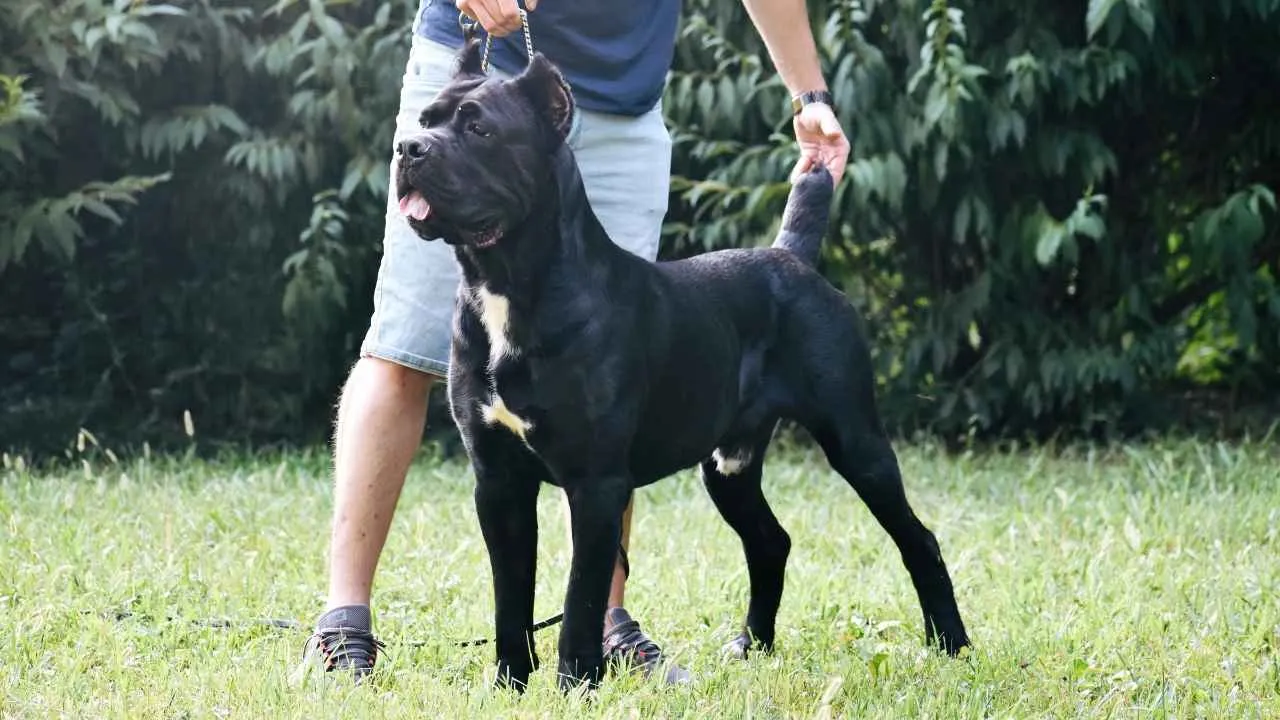
The Cane Corso is a powerful Italian mastiff breed descended from the ancient Molossian war dogs of Rome. Originally bred as a guardian and versatile farm dog, its name, derived from Latin, translates to “bodyguard dog” or “protector of the courtyard.”
This breed is known for its imposing presence, protective instincts, and working capabilities, from herding livestock to subduing wild boars. Although nearly wiped out during the World Wars, it experienced a revival in the 1970s.
Historically, Cane Corsi (plural of cane corso) were used in Roman warfare and even participated in Colosseum battles against wild animals like lions. Their lineage reflects their courageous and resilient nature.
Modern Cane Corsos retain a strong desire to work and excel in activities such as tracking, agility, and scent detection. However, due to their strength and guarding instinct, they require consistent training and early socialization—often with the guidance of an experienced handler.
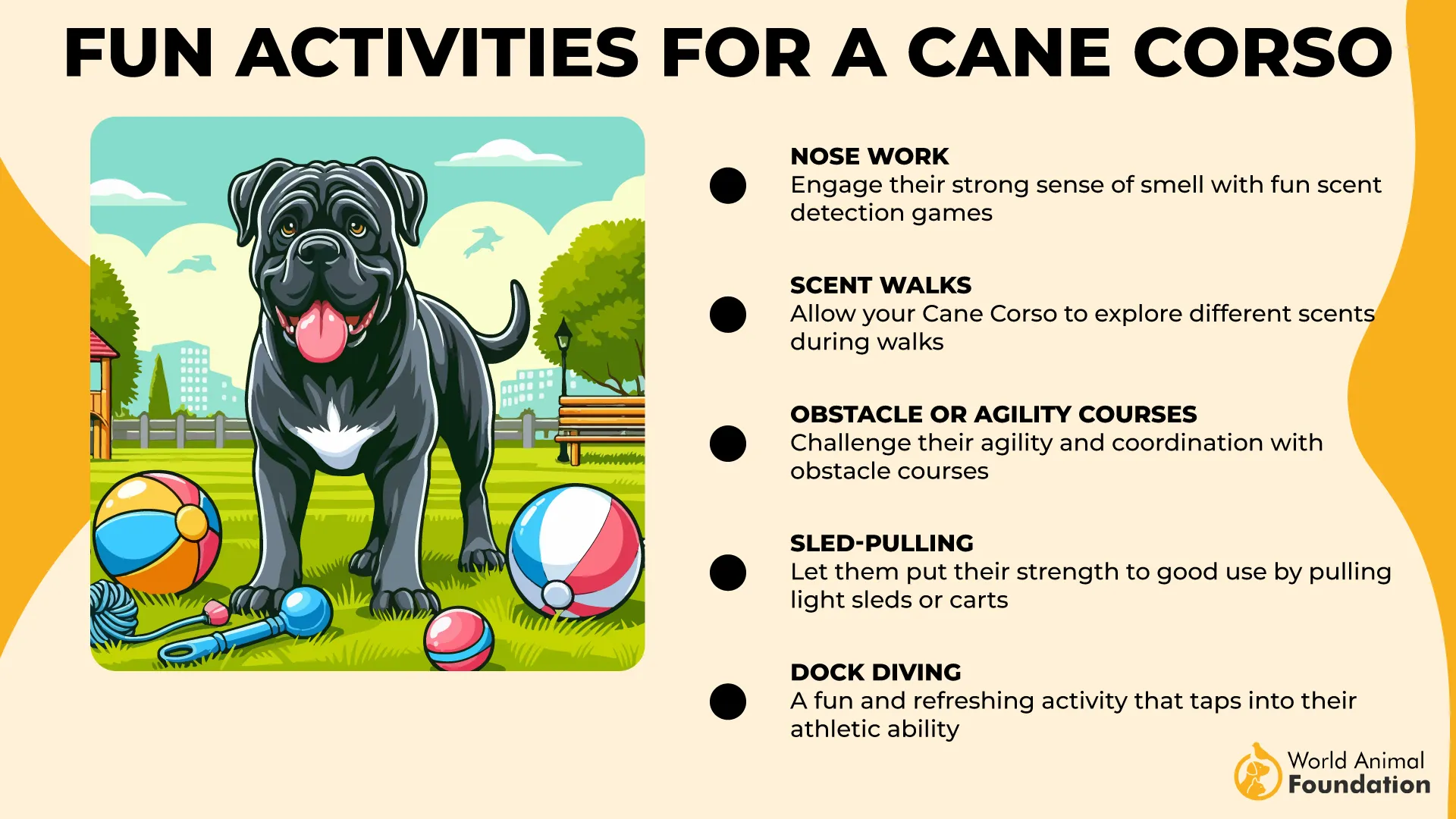
Cane Corsos are deeply loyal, thrive on human companionship, and make great family pets. While smart and affectionate, they can be wary of strangers, reserved around other animals, and are not well-suited for households with small children, seniors, or multiple dominant dogs.
AKC states this breed is expressive, often communicating with unique sounds like snorts, howls, and their signature “roo-roo.” With proper training and leadership, the Cane Corso makes a devoted and formidable companion.
3. Akita
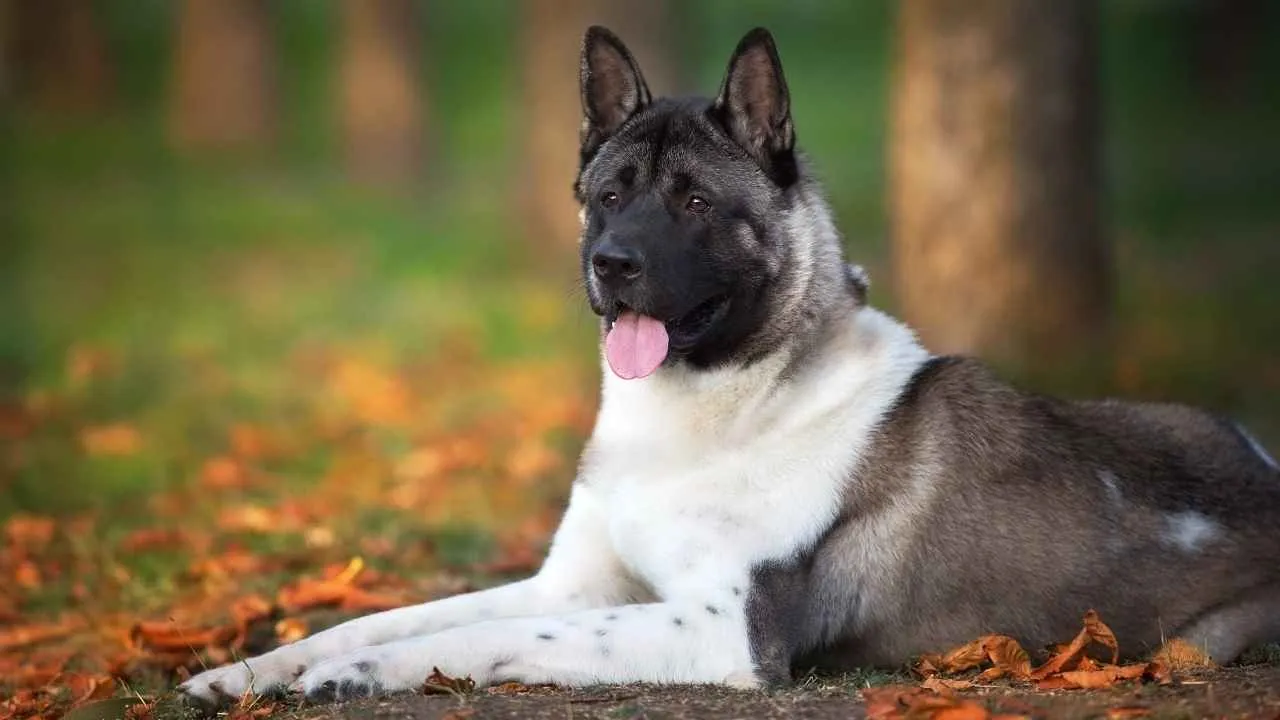
The Akita is a large, powerful breed originating from Japan’s Akita province, historically used for hunting and guarding nobility. Males typically stand 26–28 inches tall and weigh between 100–130 pounds, while females are slightly smaller. With a lifespan of 10 to 13 years, they require proper care, training, and exercise to stay healthy.
Pawlicy Advisor states Akitas are revered in Japanese culture and are seen as symbols of health and good fortune. Once reserved for the imperial family, they are now national treasures, even commemorated in statues given to families to honor new births.
The breed nearly vanished during World War II but was reintroduced and popularized in the U.S. by Helen Keller in 1937 and returning servicemen after the war. The AKC officially recognized them in 1972.
Akitas are intelligent, independent, and strong-willed, needing consistent training and early socialization. They are best suited for experienced owners and thrive in cooler climates, often gaining energy in cold weather.
Their unique features include webbed toes for snow navigation, retained dewclaws for traction, and their signature curled tail, each distinct in shape. Though aloof with strangers, Akitas bond deeply with their families and can excel in therapy work, obedience, and agility sports.
4. Doberman Pinscher
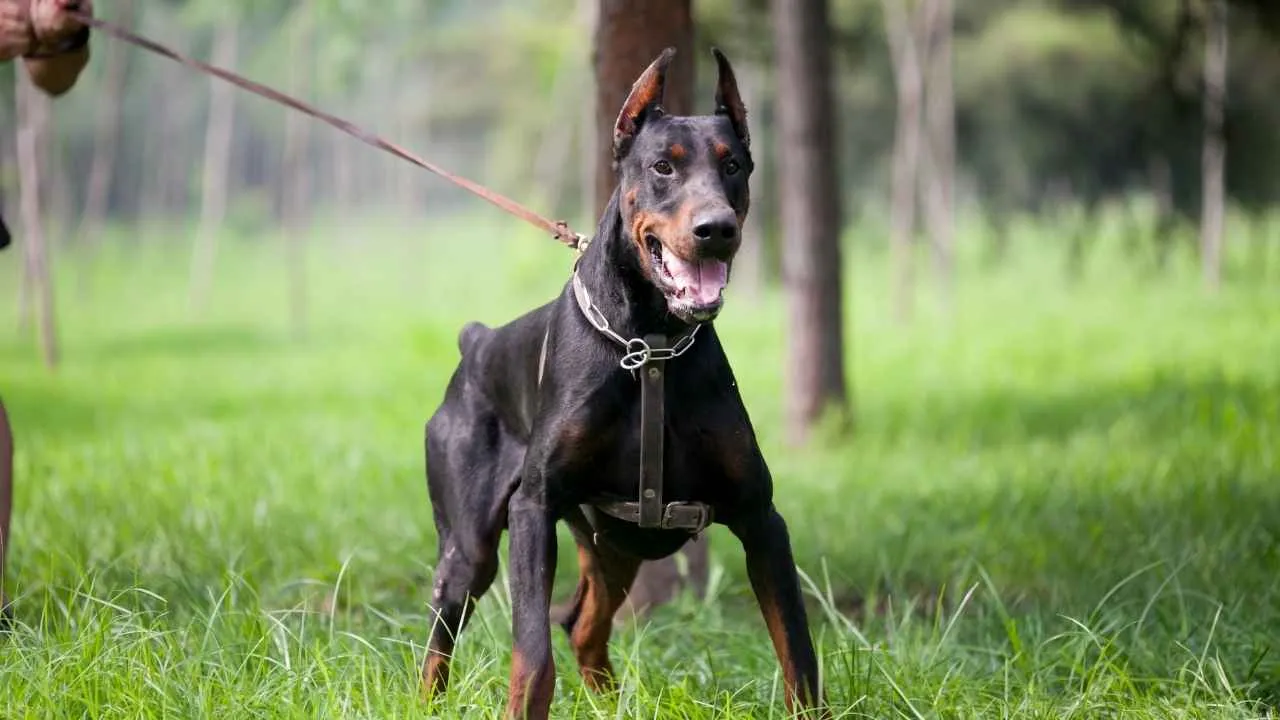
The Doberman Pinscher is a sleek, athletic, and intelligent working dog originally developed in Germany by Karl Friedrich Louis Dobermann in the late 1800s. A blend of breeds such as the Old German Shepherd, German Pinscher, Manchester Terrier, and Greyhound contributed to its creation.
Males typically stand 26–28 inches tall, females 24–26 inches, with a muscular build ranging from 60 to 100 pounds. The short, dense coat comes in black, red, blue, or fawn, marked with distinctive rust points.
Highly alert and intuitive, Dobermans are renowned for their guarding instincts and loyalty. With proper training and early socialization, they become affectionate companions known for their playful nature and sharp sense of humor. The breed is incredibly versatile, excelling in search and rescue, therapy work, police service, and a wide range of dog sports like agility, Schutzhund, tracking, and dock diving.
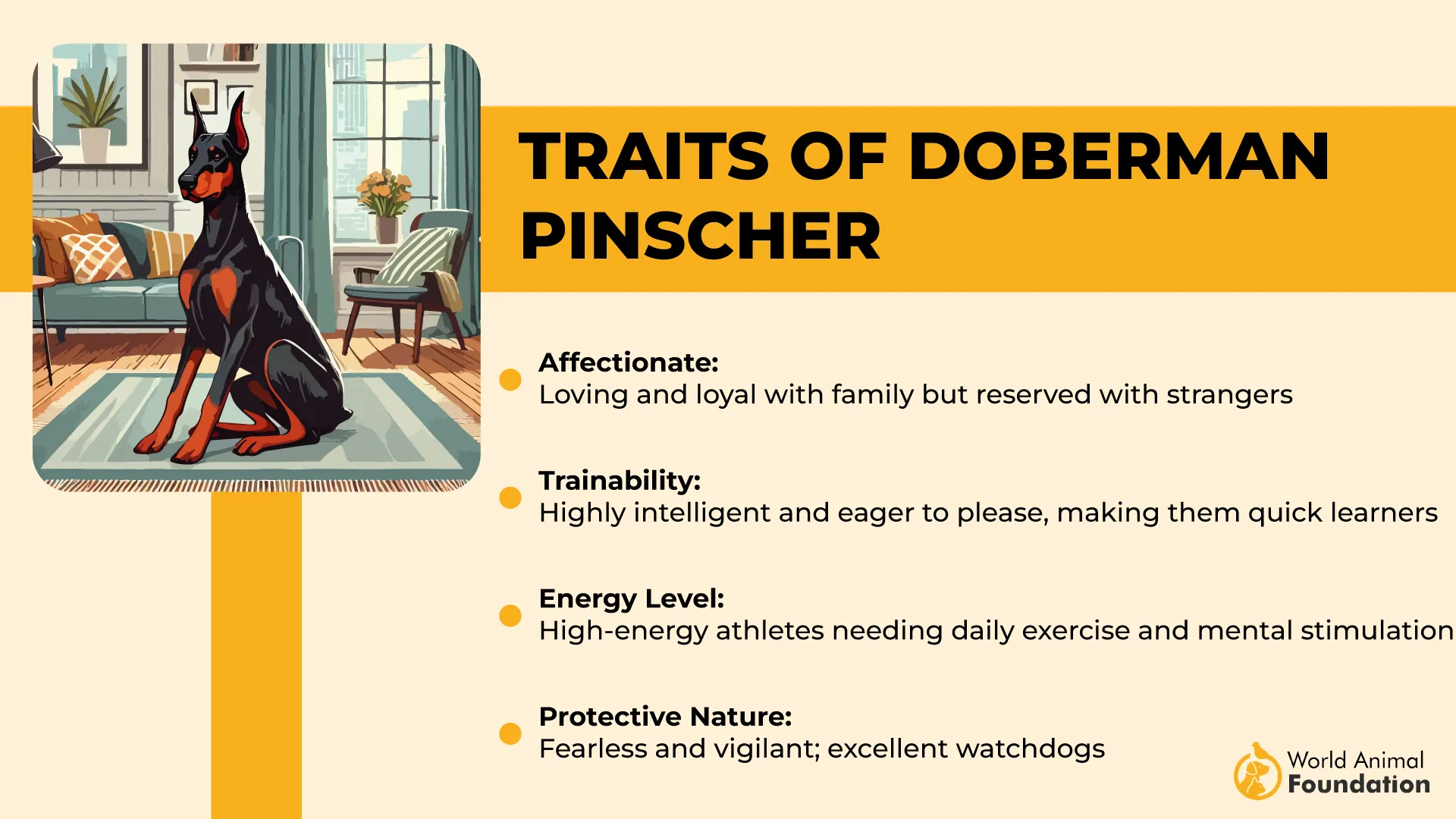
Dobermans thrive on mental and physical stimulation and require at least an hour of vigorous activity daily. Their keen intelligence and drive make them well-suited for advanced training and competitive events.
A historic contributor in times of conflict, one such Doberman named Kurt is honored at the National War Dog Cemetery in Guam for his service in WWII. Though often misunderstood due to their protective nature, Dobermans are loyal, fun-loving, and eager to form close bonds with their families.
5. German Pinscher
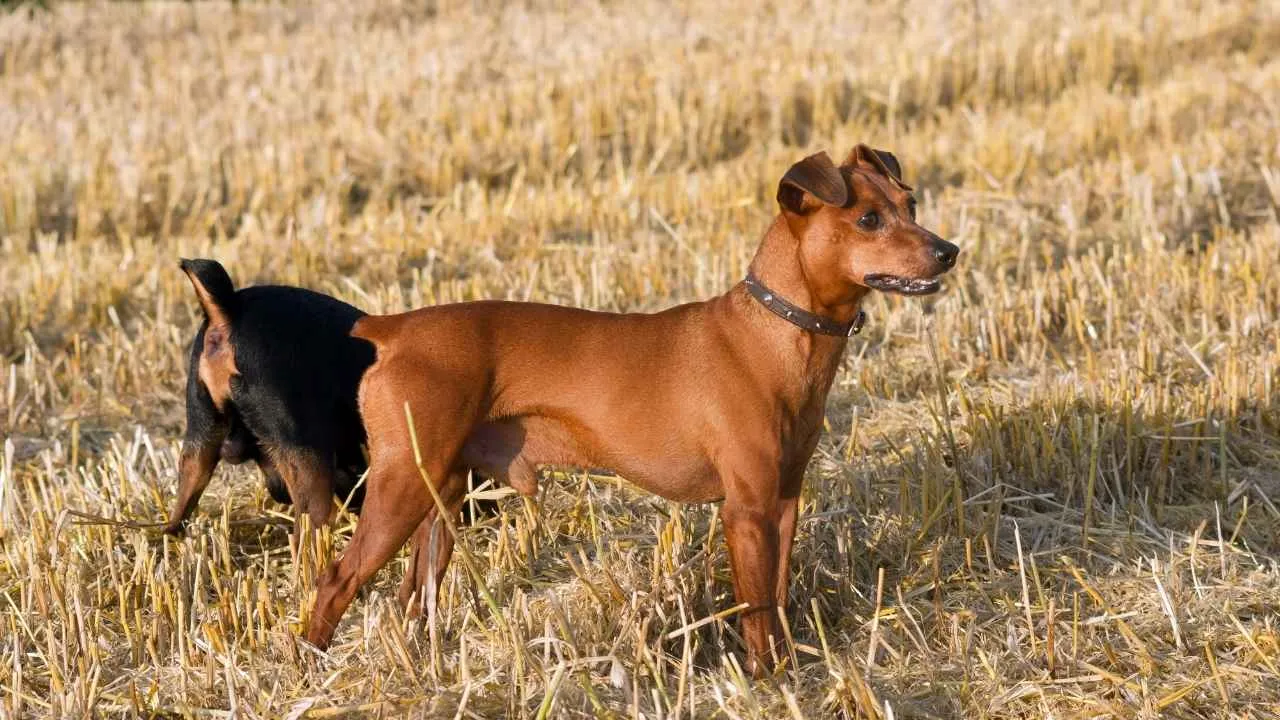
The German Pinscher is a medium-sized, energetic breed developed in Germany during the 18th or 19th century for farm work, particularly rodent control. Standing 17–20 inches tall and weighing 25–45 pounds, this muscular and agile dog is often mistaken for a smaller Doberman but is distinct in size and temperament.
The breed nearly went extinct after the World Wars, but thanks to the efforts of Werner Jung, who selectively bred from oversized Miniature Pinschers and a smuggled female from East Germany, the line was successfully revived.
Highly intelligent and lively, German Pinschers thrive on mental stimulation and physical activity. Their playful spirit and loyalty make them affectionate family companions, though their strong prey drive and independence require firm, consistent training.
Activities like agility, obedience trials, or interactive games help fulfill their need for purpose and challenge. A fenced yard is essential due to their hunting instincts and curiosity.
Confident and courageous, these dogs are not easily startled and respond well to socialization from an early age. While they’re generally good with children and other pets, supervision is always recommended. With the right guidance and engagement, German Pinschers make bold, loving companions who are eager to please and always up for adventure.
6. Portuguese Water Dog
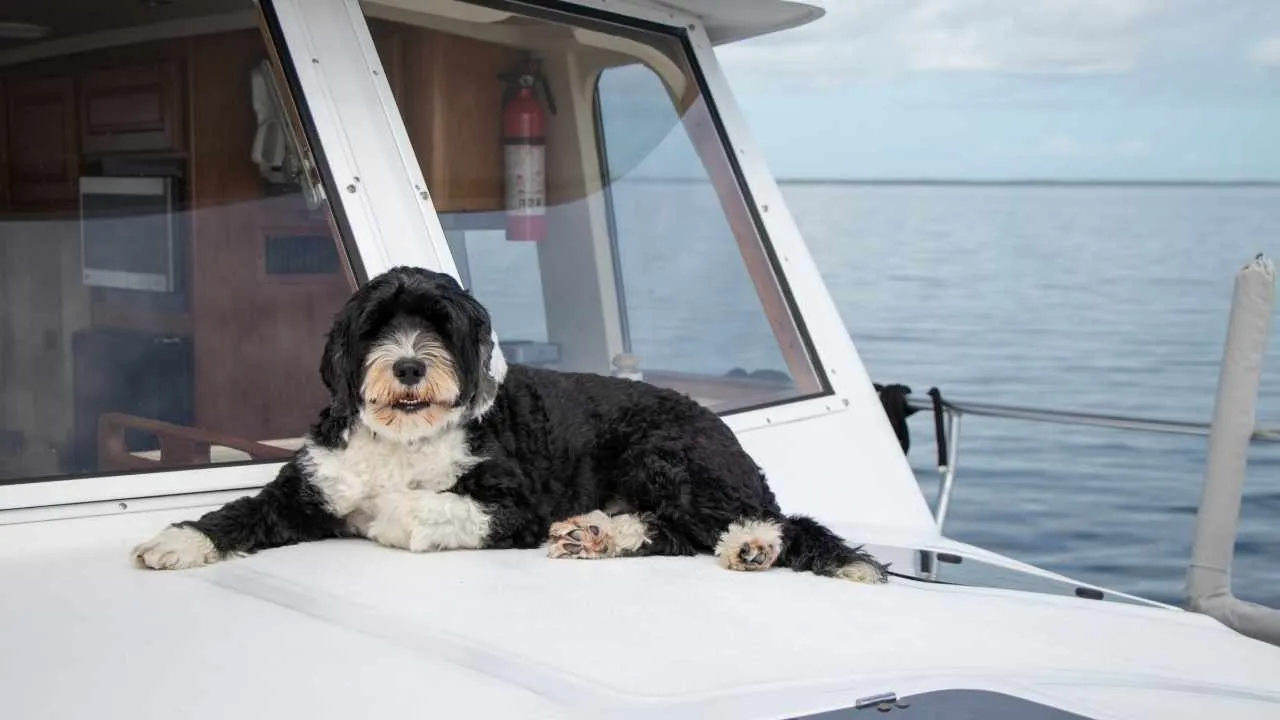
The Portuguese Water Dog (PWD), or Cão de Água, is a spirited and intelligent breed originally developed in Portugal to assist fishermen. Known for their exceptional swimming ability, they have webbed feet, a muscular build, and a waterproof coat—traits that enabled them to herd fish, retrieve gear, and deliver messages across boats.
Their thick, low-shedding coat, which can be curly or wavy, requires regular grooming and is often clipped in either a Lion or Retriever style for practicality and show purposes.
Highly energetic and resistant to fatigue, these affectionate dogs thrive on daily exercise and mental stimulation. Their working background makes them well-suited for activities like agility, water sports, and obedience trials.
Recognized by the American Kennel Club in the 1980s and classified in the Working Group, PWDs are sometimes affectionately called “Porties.” Though originally bred for maritime labor, today, they are valued as versatile companions capable of excelling in both sporting events and service roles.
7. Siberian Husky
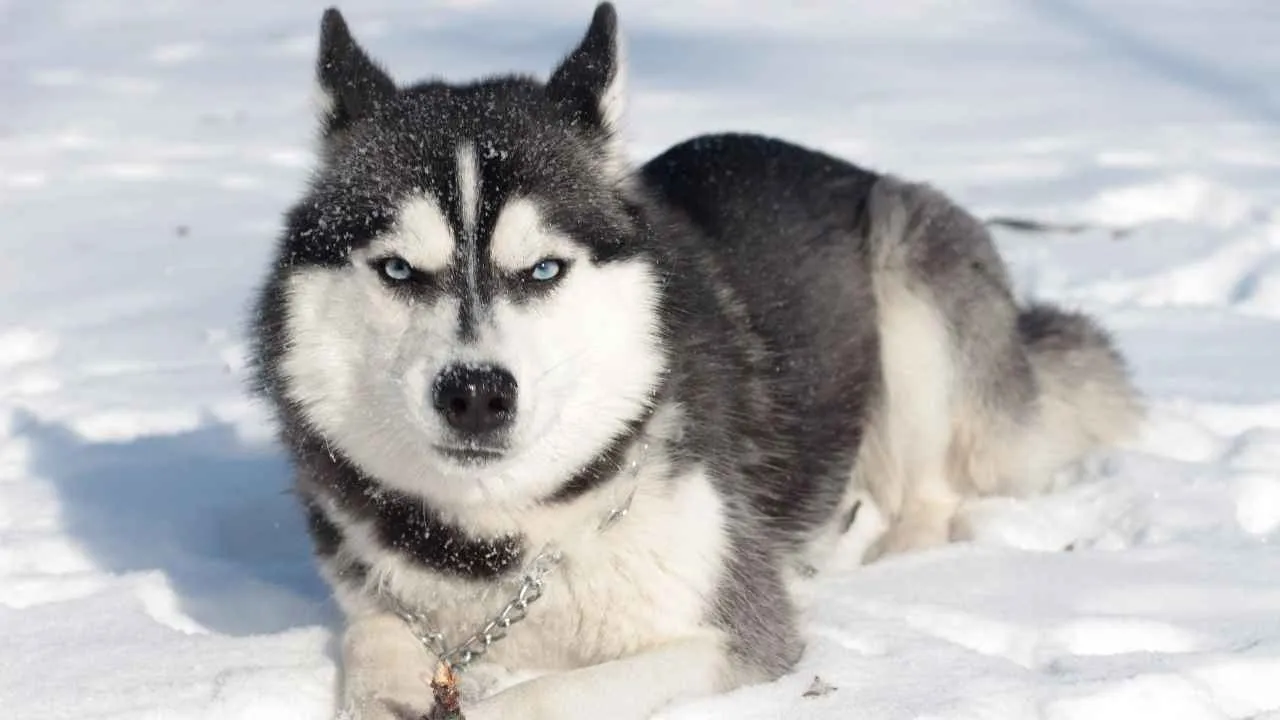
The Siberian Husky is a compact, medium-sized working dog developed by the Chukchi people of Siberia. Bred for endurance, these high-energy dogs pulled sleds across frozen terrain with speed and resilience. With almond-shaped eyes—brown, blue, or one of each—and a clean, dignified nature, Huskies are sociable, tidy, and naturally suited to the outdoors. Lighter than the Alaskan Malamute, they thrive on activity and structure.
Huskies rose to fame during the 1925 serum run to Nome, Alaska, when a team led by Leonhard Seppala delivered life-saving medicine over 650 miles of harsh conditions. Balto, the lead dog of the final leg, became a national hero and symbol of the breed’s endurance. These traits still define the Husky’s characteristics today.
Imported to Alaska for racing, Huskies excelled in sled competitions and later served in World War II as Arctic search-and-rescue dogs. Their intelligence and stamina made them vital in both war and peace. However, like other active breeds such as Labs, Huskies can become bored easily. Without proper outlets, their energy may turn destructive.
Modern Huskies excel in activities like agility, hiking, rally obedience, and skijoring. These challenges help prevent boredom and reinforce their working instincts. Providing mental and physical stimulation—especially outdoors—is essential for their well-being.
In the Chukchi legend, two Huskies guard the gates of heaven, turning away anyone who mistreats a dog. This reflects the deep respect between the Chukchi and their dogs—an enduring bond built through survival in one of Earth’s harshest environments.
8. Black Russian Terrier
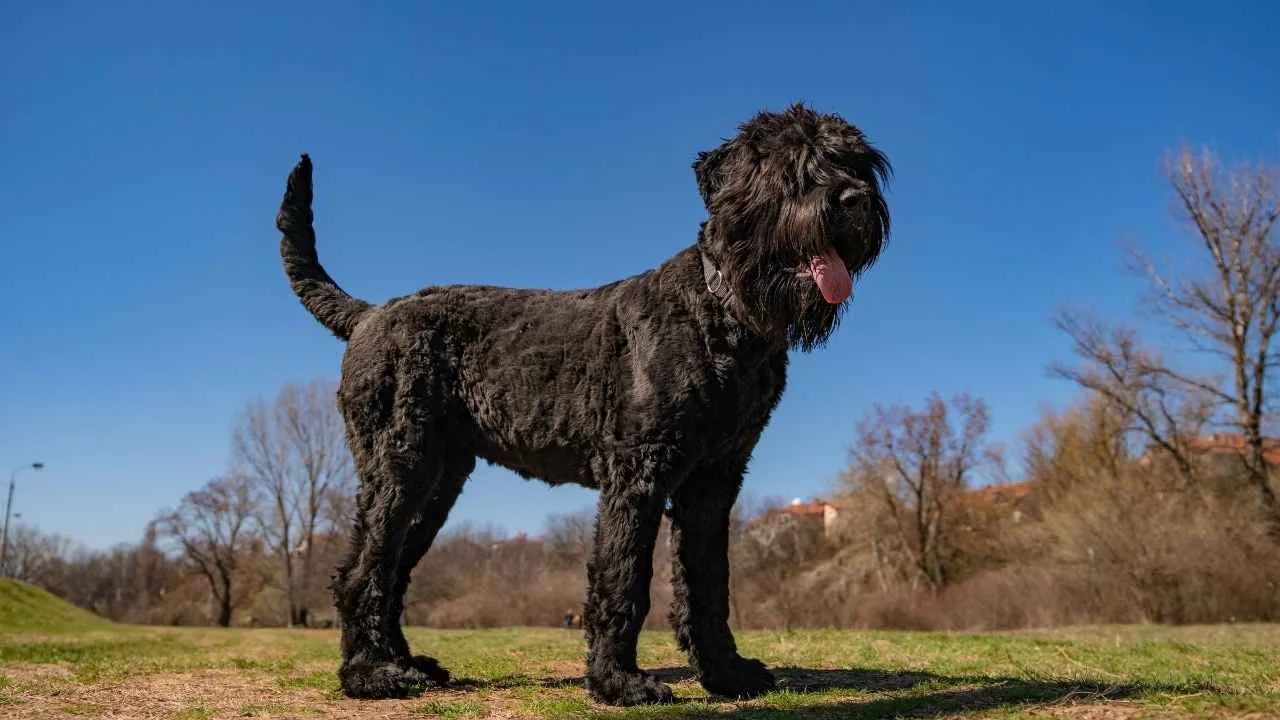
The Black Russian Terrier was developed in Russia in the late 1940s and 1950s as a versatile working dog. Created by crossing several large breeds, such as the Rottweiler, Giant Schnauzer, Airedale Terrier, and Newfoundland, the goal was to produce a robust, intelligent dog capable of performing various tasks. Despite its name, the breed is not a true terrier and is classified as part of the working group.
Known for their size, Black Russian Terriers typically stand between 26 to 30 inches at the shoulder and weigh between 80 to 130 pounds. Developed by the Russian army after World War II, they were specifically bred to serve as guard dogs and general service dogs, capable of rounding up fugitives and enduring diverse terrains and extreme climates.
Initially showcased in 1955 at an exhibition in Moscow, the Black Russian Terrier’s first breed standard was published in 1958. It was later recognized by the Fédération Cynologique Internationale in 1984. Over time, the breed earned the nickname “the Black Pearl of Russia,” reflecting its unique origin and specialized purpose as a protective and defensive dog, much like a pearl’s formation to defend against external irritants.
Although reserved with strangers, Black Russian Terriers are affectionate with their families. Early and consistent socialization is crucial, and they can coexist well with other dogs and pets if properly introduced. They are adaptable to different living environments, provided there’s enough space and the owner is committed to meeting their needs.
PetMD states Black Russian Terriers are intelligent, confident dogs that require regular exercise, including daily long walks and playtime. Activities like playing fetch, frisbee, hiking, and swimming can help burn off their energy. Consistent training with positive reinforcement is key, as early socialization and proper handling are necessary to prevent undesirable behaviors and ensure the dog’s well-adjusted nature.
9. Boxer

The Boxer breed has a rich history dating back to ancient Assyria, where their ancestors served as war dogs during the Assyrian Empire. Over time, they evolved into the Bullenbeisser, a breed known for hunting large game.
During World War I, Boxers were used as guard dogs, messengers, attack dogs, and pack carriers. They were also employed in World War II, gaining popularity as soldiers brought them home after the war.
Males typically reach 25 inches in height and weigh between 65 to 80 pounds, while females stand about 21 to 25 inches and weigh 50 to 65 pounds.
Boxers are known for their unique head shape, which aids in their hunting abilities. Their short snout, undershot jaw, and flat nose allow them to bite with power, hold prey close, and breathe while doing so. The wrinkles on their faces help keep blood out of their eyes during intense hunts.
Their robust build and intelligence made them a popular choice for police work, and their natural attachment to humans also makes them great companions and service dogs, including guide dogs for the blind and alert dogs for epilepsy.
The Boxer is a medium-sized, squarely built dog with a short, shiny coat that comes in fawn or brindle colors, often with a black mask on its face. Though traditionally, their ears were cropped to stand erect, many Boxers have naturally folded ears. Their tails are typically docked and carried high. Boxers are known for their playful and energetic nature, requiring regular exercise and mental stimulation. They are loyal to their families and protective of their homes.
Due to their brachycephalic (short-headed) structure, Boxers may struggle with breathing, especially in hot weather. They are prone to overheating, making them less suitable for warm climates. Health concerns for the breed include a fatal arrhythmia and hip dysplasia. To minimize the risk of hip dysplasia, it’s recommended that Boxer puppies be raised on a large-breed puppy food to control their growth rate.
Conclusion
Hyperactive working dog breeds aren’t for everyone, but for the right owner, they’re a joy to raise. High-energy dog breeds like the Border Collie, Australian Shepherd, Jack Russell Terrier, and Belgian Malinois are known for their boundless energy and sharp minds. These active dogs need much more than a walk around the block; they thrive with regular physical exercise, mental challenges like puzzle toys, and tasks that satisfy their working instincts.
If you’re an active person who loves to explore and stay on the move, one of these high-energy breeds could be a great choice. Even traditionally friendly dogs like the Labrador Retriever or Australian Cattle Dog can become restless or even destructive without enough exercise. These dogs tend to become frustrated in sedentary environments, especially in small homes where space is limited. Simply put, they’re not built for the couch.
That said, with structure, purpose, and plenty of stimulation, these dogs can also know when it’s time to be calm in the house. Choosing a high-energy breed means embracing their endless energy and meeting it with equal enthusiasm. It’s a commitment—but one that rewards you with loyalty, fun, and a lifelong adventure partner.


